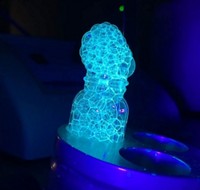Advertisement
Grab your lab coat. Let's get started
Welcome!
Welcome!
Create an account below to get 6 C&EN articles per month, receive newsletters and more - all free.
It seems this is your first time logging in online. Please enter the following information to continue.
As an ACS member you automatically get access to this site. All we need is few more details to create your reading experience.
Not you? Sign in with a different account.
Not you? Sign in with a different account.
ERROR 1
ERROR 1
ERROR 2
ERROR 2
ERROR 2
ERROR 2
ERROR 2
Password and Confirm password must match.
If you have an ACS member number, please enter it here so we can link this account to your membership. (optional)
ERROR 2
ACS values your privacy. By submitting your information, you are gaining access to C&EN and subscribing to our weekly newsletter. We use the information you provide to make your reading experience better, and we will never sell your data to third party members.
Metal-Organic Frameworks
Chemistry In Pictures
Chemistry in Pictures: Let there be light
by Brianna Barbu
November 10, 2022
In the beginning, there was darkness: a nonfluorescent solution of cesium bromide, lead(II) bromide, and a metal-organic framework dispersed in dimethyl sulfoxide. But all it takes is the addition of some hexanes as an “antisolvent” to get the metal ions to assemble themselves into bright green fluorescent perovskite quantum dots inside the MOF’s nanosized pores.
Nima Tabatabaei Rezaei, a PhD student in mechanical engineering at the University of Calgary, captured the luminous transformation on video as part of his research on ways to stabilize quantum dots for biological imaging applications. The goal is to prevent the perovskites from shedding toxic lead ions inside cells. Tucked inside the MOF framework, the nanoparticles are shielded from degradation by moisture and oxygen for months, compared to mere hours for quantum dots made by traditional ligand-assisted methods. Tabatabaei Rezaei envisions that stable quantum dot–carrying MOFs could also be loaded with drugs for targeted delivery.
Submitted by Nima Tabatabaei Rezaei
Do science. Take pictures. Win money. Enter our photo contest here.





Join the conversation
Contact the reporter
Submit a Letter to the Editor for publication
Engage with us on Twitter